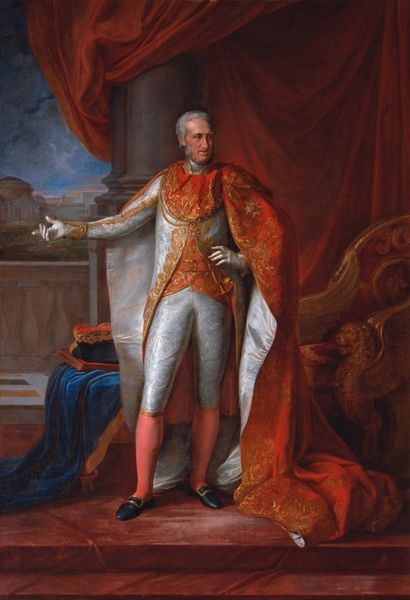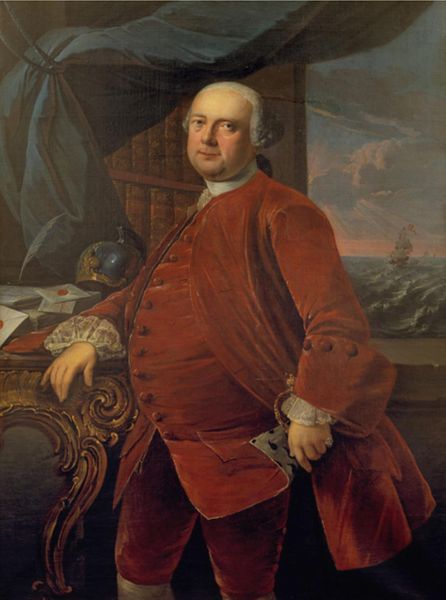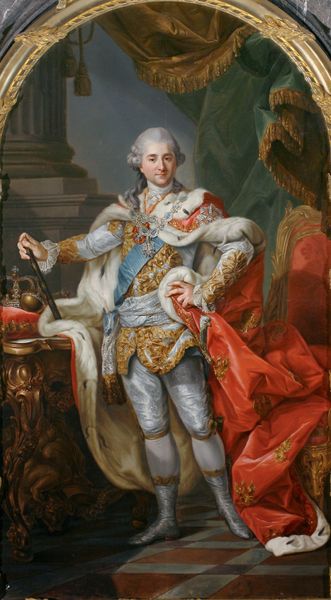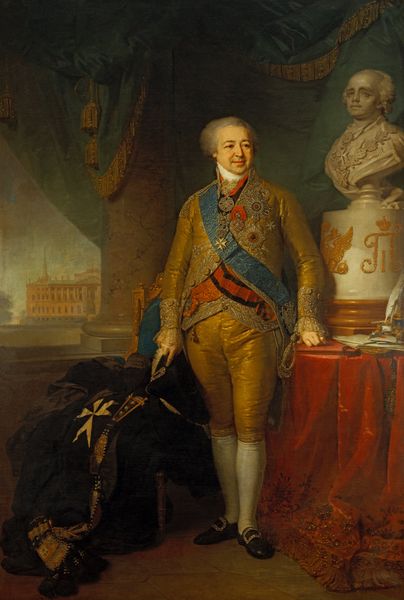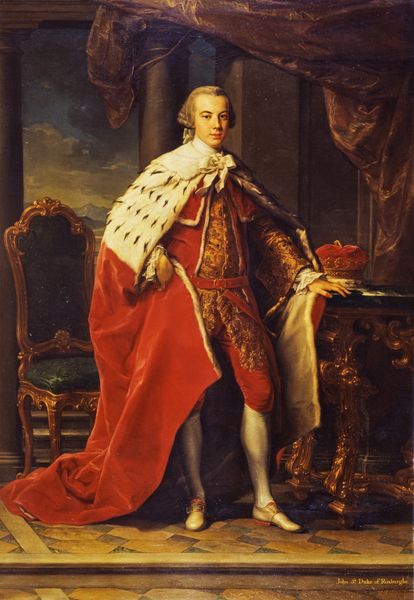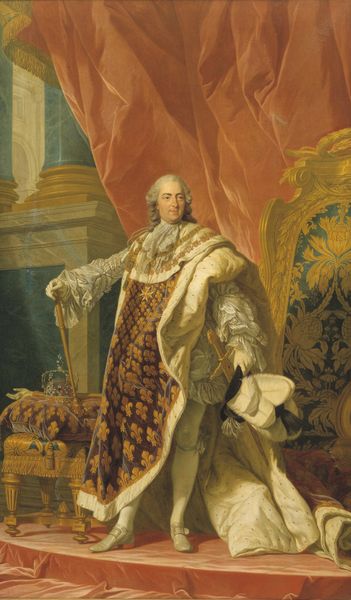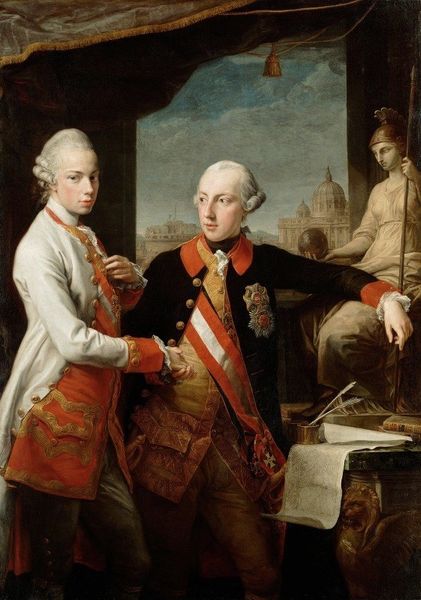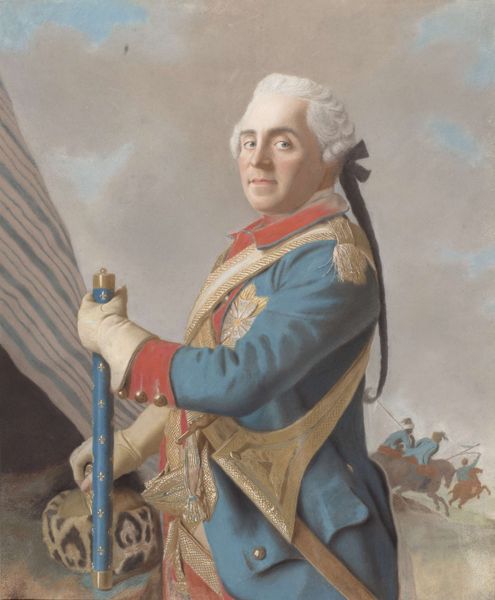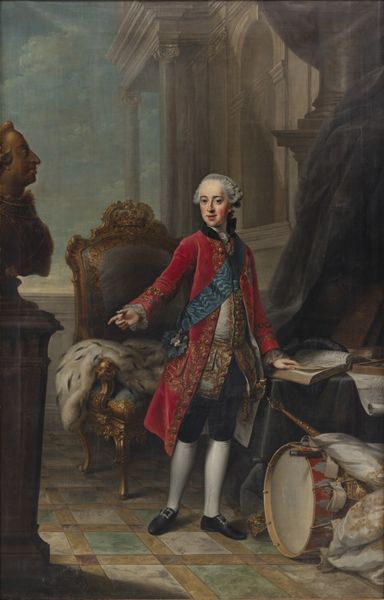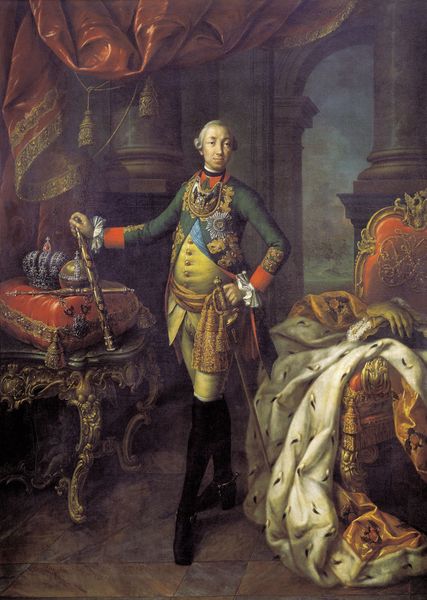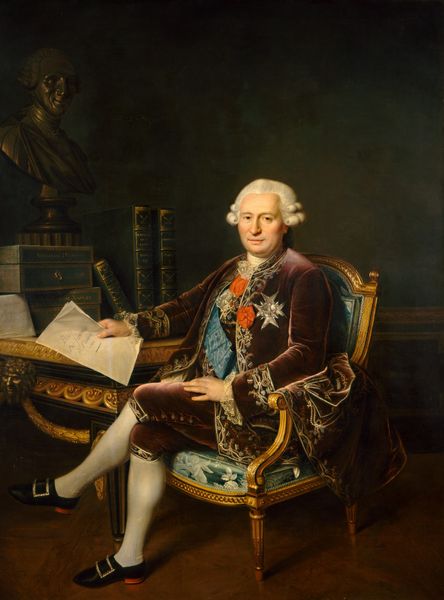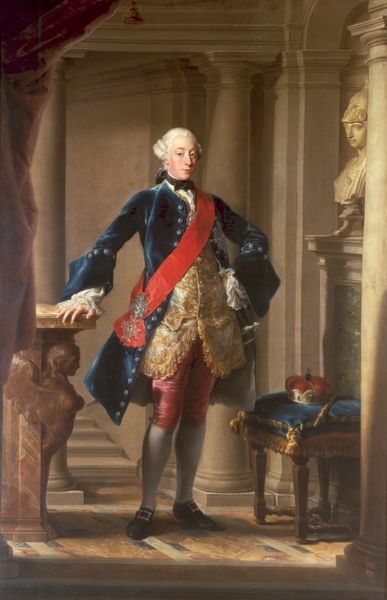
Copyright: Public domain
Curator: Here we have Pompeo Batoni's "Portrait of Francis I, Holy Roman Emperor," painted in 1769. The oil-on-canvas work places Francis in a grand interior. Editor: The first thing that strikes me is how meticulously Batoni renders texture; look at the velvet of his coat, the way it reflects light, and the precise folds of the ribbon across his chest! It feels incredibly tactile. Curator: The figure of Francis I is steeped in symbols of power. That sash, the Order of Saint Stephen, represents his role as a Habsburg ruler. We see, behind him, allegorical sculptures, referencing virtues like Fortitude, a reminder of qualities linked with leadership. The architecture frames Francis, solidifying his persona. Editor: Indeed. Note how Batoni positions Francis in contrapposto, weight shifted, contributing to an overall dynamism of form and further drawing attention to the play of light across the Emperor’s figure. Also, look at that elaborate table, its eagle-shaped base seeming to almost support the Emperor himself, again reinforcing a symbolic message of dominion. Curator: Absolutely, there’s a narrative being constructed here. Every object carefully placed—even the inkwell and paper, symbolic of governance through writing and decree. Francis’ gaze directs us; his posture is one of commanding authority, yet not aggressive, an important distinction for portraying leadership in the late Baroque period. He's showing you HIS empire. Editor: True, however the artist seems more interested in conveying an idealized version of leadership rather than historical or emotional specificity. What’s emphasized are the formal elements—color harmony, compositional balance, surface fidelity. The muted palette is pleasing, classical… but somewhat cold. Is the ultimate impact mere aesthetic authority over substantive presence? Curator: Perhaps Batoni wished to ensure a kind of timelessness for the portrait. Beyond Francis the individual, it signifies the eternal nature of imperial power and tradition, expressed in a sophisticated visual vocabulary understood by those of the era. I see a statement of intent about the persistence of the old orders through the visuals on display. Editor: Yes, there's that cultural legacy echoed here in the art; well stated. Thanks! Curator: A fine point to finish upon. Thank you as well.
Comments
No comments
Be the first to comment and join the conversation on the ultimate creative platform.
